Flooring In Prison Design
Floored It Blog Series
August 2020
.png)
Good, carefully considered design is vital in any environment where people work or live. This is especially true for prisons where those in custody will usually spend 24 hours a day inside and as such, the environment will have a significant impact on their mental state and well-being. In this blog Sharron Kapellar, National Framework Manager, takes a look at the role flooring plays in prison design.
Prisons have multiple roles, including securing people away from the rest of society and punishment through the removal of freedom. However, a prisons priority is to support and facilitate rehabilitation, as well as incorporating diversity to enable a sense of identity, to prevent the institutionalisation that would impact a person’s ability to successfully re-join society once released. It is also important to remember that prisons are workplaces and as such the well-being of the prison officers must also be considered.
The design and layout of the facility can make a significant contribution to this, something that is highlighted by the principles of environmental psychology - the area of psychology concerned with the impact of the surroundings on people – and flooring has an important role to play.
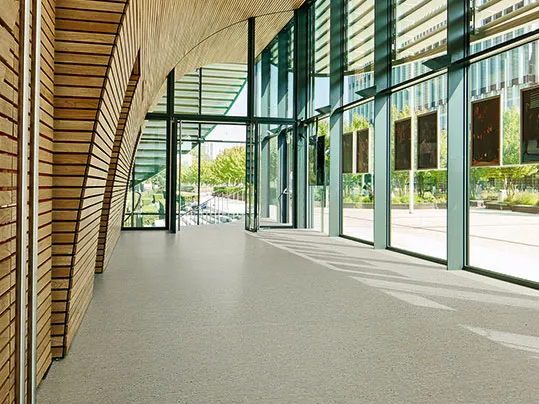
One of the core ways that flooring can contribute to the design of the building is in helping to ensure legibility. This is the extent to which the features of the design aid people in generating a ‘cognitive map’ of the environment and simplify wayfinding. A lack of legibility can make a building disorientating and increase stress levels as a result. A variety of forms, textures and patterns in flooring can be used to make areas distinctive that would otherwise be too similar and avoid an institutional aesthetic.
The choice of flooring can also be used to introduce a wider range of colours into the design scheme to make the environment more visually interesting and appealing. In the visitor areas, the flooring can also be used to introduce a more pleasant, positive experience for friends, family and the prisoners themselves.
For areas of a prison that are used by the staff, the flooring can help create the feeling of a professional environment where the staff can be proud to come to work. This can help reduce stress levels and improve employee retention.
Creating the right atmosphere requires careful consideration of elements such as the lighting, acoustics and ventilation. Flooring plays a fundamental role in minimising noise, echo and reverberation, all of which can contribute to stress and inhibit conversation. There are a range of flooring options available with sound absorbing properties that also meet the functional requirements of a prison environment.
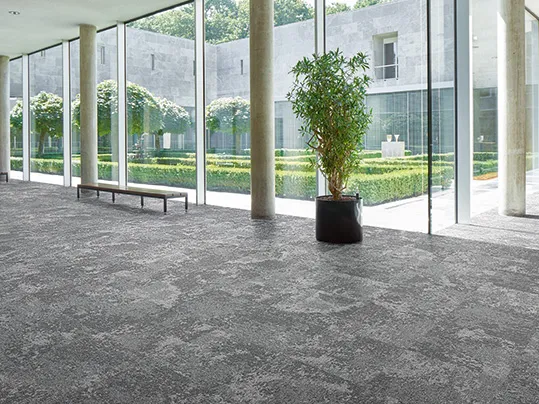
Tessera Cloudscape carpet tiles
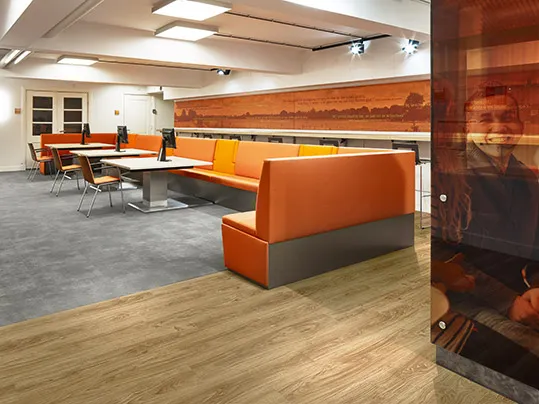
Allura Decibel acoustic luxury vinyl tiles
It is also important to tailor the choice of flooring to the specific areas of the building and the activities that will take place there.
Entrance areas
Here it is crucial to stop the spread of moisture and dirt into the building. Not only does this minimise the cleaning requirements but can also prevent slips and falls caused by dry and wet soiling. High quality entrance flooring systems such as Forbo’s Coral collection, can stop up to 95% of walked in dirt and moisture.
Social areas and day rooms
It is essential to have a hard-wearing surface that will withstand the frequent movement of people and furniture. However, in areas where people will gather it is also important to ensure that the flooring contributes to enhancing the acoustics of the space to prevent high noise levels that would make conversation difficult. Products from Forbo’s Marmoleum, Eternal and Sarlon Acoustic ranges can meet these requirements.
TV rooms and quiet areas
In these areas, it is important to create a calming environment through the use of colour and sound absorbing materials. In addition to sound absorbing Marmolum Decibel, electrostatically flocked flooring such as Forbo’s Flotex can provide a solution. Flotex is durable and easy to clean like resilient flooring, but also offers the comfort and sound-absorbing properties of textile flooring.
Dining areas and servery
In dining and servery areas, safety and ease of cleaning are the key considerations. The flooring must have slip resistant properties and allow simple and effective cleaning to prevent the risk of injury. Flotex also provides a solution here as it is quiet and comfortable as well as providing a slip resistant, easy to clean surface.
Toilets showers and bathrooms
Similarly, for wet areas such as toilets, showers and washrooms, slip resistant flooring is crucial. Specially designed, safety flooring with a long-lasting slip resistant finish can help prevent accidents even where high levels of moisture are present. Forbo’s Step range (Surestep and Safestep) is suitable for a wide range of applications, including wetrooms, with R10, R11 and R12 slip resistance rated products available. It provides a guaranteed lifetime performance through innovative slip resistant particles in the wear layer of the flooring.
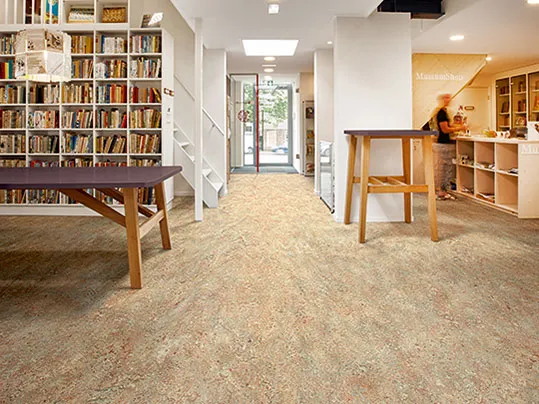
Marmoleum Vivace sheet linoleum
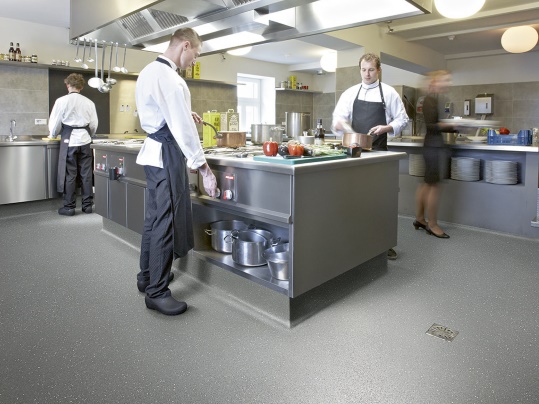
Surestep safety vinyl
When selecting the flooring it is also important to consider the special requirements of people with mental health conditions, cognitive differences and age-related issues. The concept of designing for the mind is becoming more widely adopted and it is important that prison environments also adopt best practice in this area.
As the prison population ages, the prison system increasingly has to deal with issues such as dementia and age-related conditions. Dementia causes physical as well as neurological issues and people can experience a range of changes, including sensory, mobility and cognitive difficulties. Dementia can cause problems with depth perception and a reduced sensitivity to contrast makes it difficult to distinguish the foreground from background.
One of the most important considerations is the tonal contrast, which is measured using Light Reflectance Values (LRV). This is the percentage of visible and usable light that is reflected from a surface when illuminated by a light source.
The LRV of different surfaces should be considered to highlight the differences in key surfaces such as wall, floors and doors and minimise the perception of difference between adjacent floor areas. This helps people with reduced visual perception to navigate the space safely while avoiding a false impression of a change in floor level. It is also recommended that flecked, striped or patterned effects or flooring that incorporates a logo are avoided as these patterns can create the perception that the floor is not flat.
Prison environments present a number of design challenges to ensure that the building protects the wellbeing of those in custody and fosters positive behaviours. The choice of flooring is crucial as it has a role, not only in the look of a space but also in the comfort, safety and wellbeing of those in the environment.